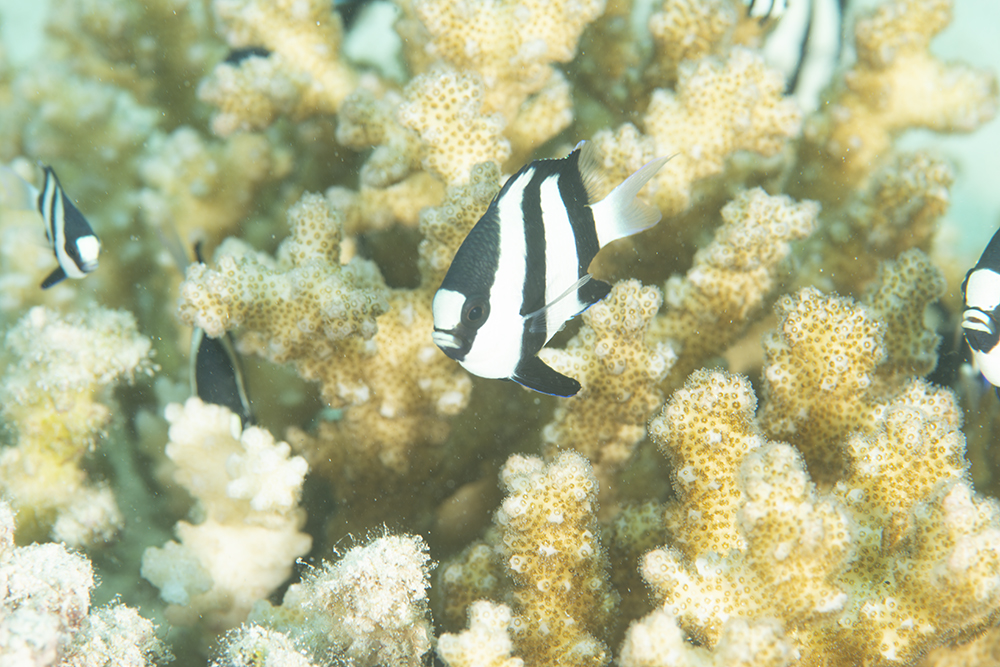A piece of research published in the journal Marine Biology asked just that question.
A student, Jacob Eurich from UC Santa Barbara, was studying damsels in the Coral Triangle region, Kimbe Bay, Papua New Guinea to be exact, when he made some interesting discoveries.
“Previously, scientists thought that all territorial damselfishes were herbivorous, farm algae and basically do the same thing ecologically on reefs,”
“We set out to understand how they live so close to one another without directly competing, and why,” he said.
It all comes down to food, and more fundamentally, energy. Competition for food can be intense and using energy to compete with neighbors in nearby territories uses energy. By analyzing the fishes’ diets using isotope analysis of the fishes’ flesh the researchers could identify what foodstuffs the fish were consuming over the long term. “It is based on the principle, ‘you are what you eat,'” said Eurich.
“The analysis proved that in fact not all territorial damselfish are herbivorous, and we found evidence of planktivory, quite the opposite feeding regime,” Eurich said. Further, he added, these species had previously only been known to eat things off the reef. “We found evidence of two species foraging for food that drift by in the water column.”
“I think it is a cautionary flag to scientists in all ecological-related fields to be careful when generalizing groups of similar species,” Eurich said. “Each species is likely partitioning a resource and if it doesn’t look like they are, there is a chance a technology with a finer resolution is needed to detect differences.”
This is interesting as it shows that strategies exist to reduce energy expenditure:
“An animal can’t spend all of their time and energy fighting a neighbor,” Eurich said. “In this study we showed some of the species switched diets to reduce competition.”
The authors also suggest the ability of fishes to adapt to change may make them more resilient to the effects of ocean warming and ocean acidification.
“Where most species die off due to the coral habitat loss, these algae-farmers actually increase in abundance,” said Eurich, who is now based in the McCauley Lab at UC Santa Barbara’s Marine Science Institute. “The study here shows how many of these species may coexist in the future. I think it is important to look at the competition and coexistence of species that may be the most abundant on future reefs.”
Journal reference:
J. G. Eurich, J. K. Matley, R. Baker, M. I. McCormick, G. P. Jones. Stable isotope analysis reveals trophic diversity and partitioning in territorial damselfishes on a low-latitude coral reef. Marine Biology, 2019; 166 (2) DOI: 10.1007/s00227-018-3463-3
Quotes taken from press materials provided by UC Santa Barbara










0 Comments